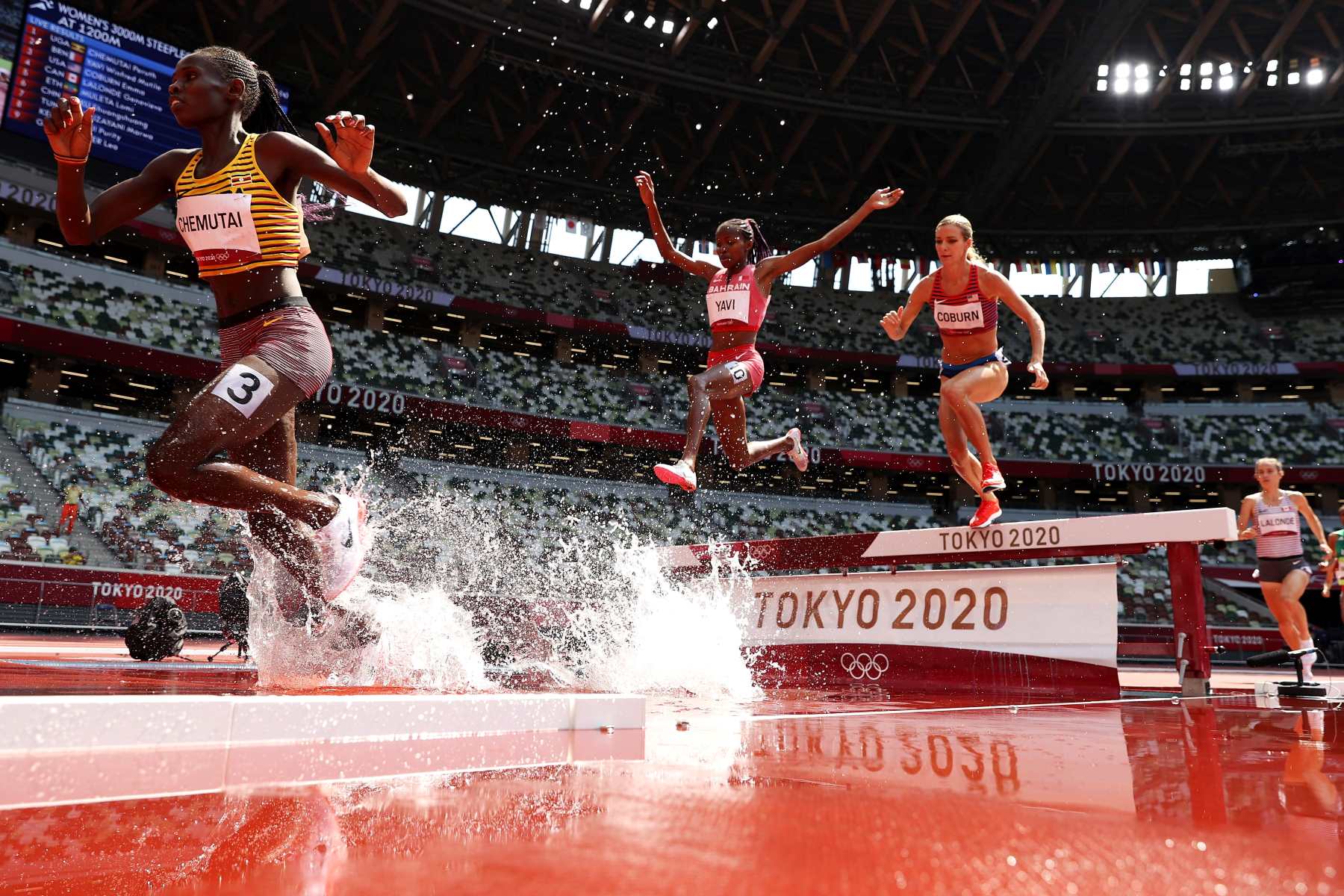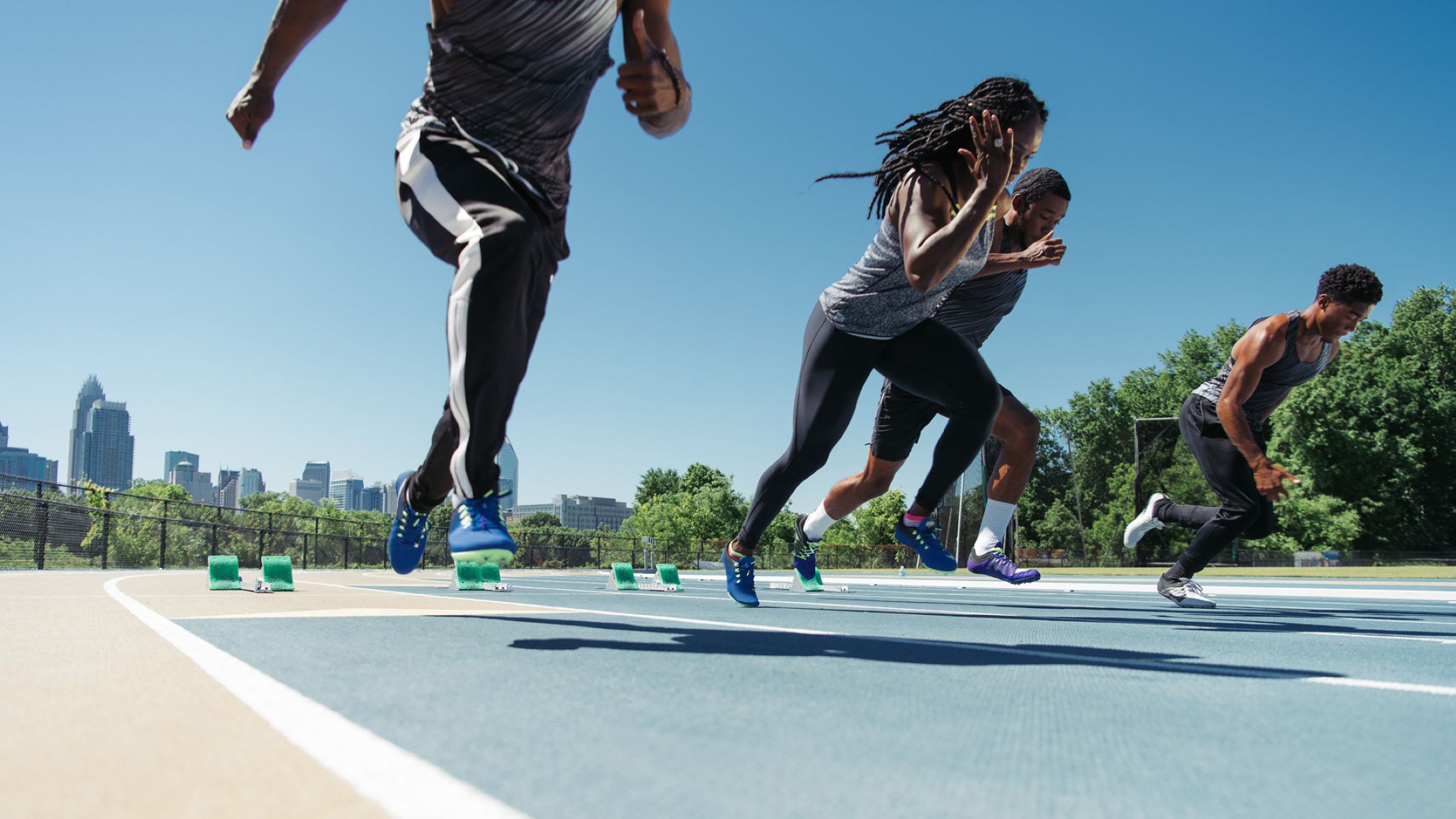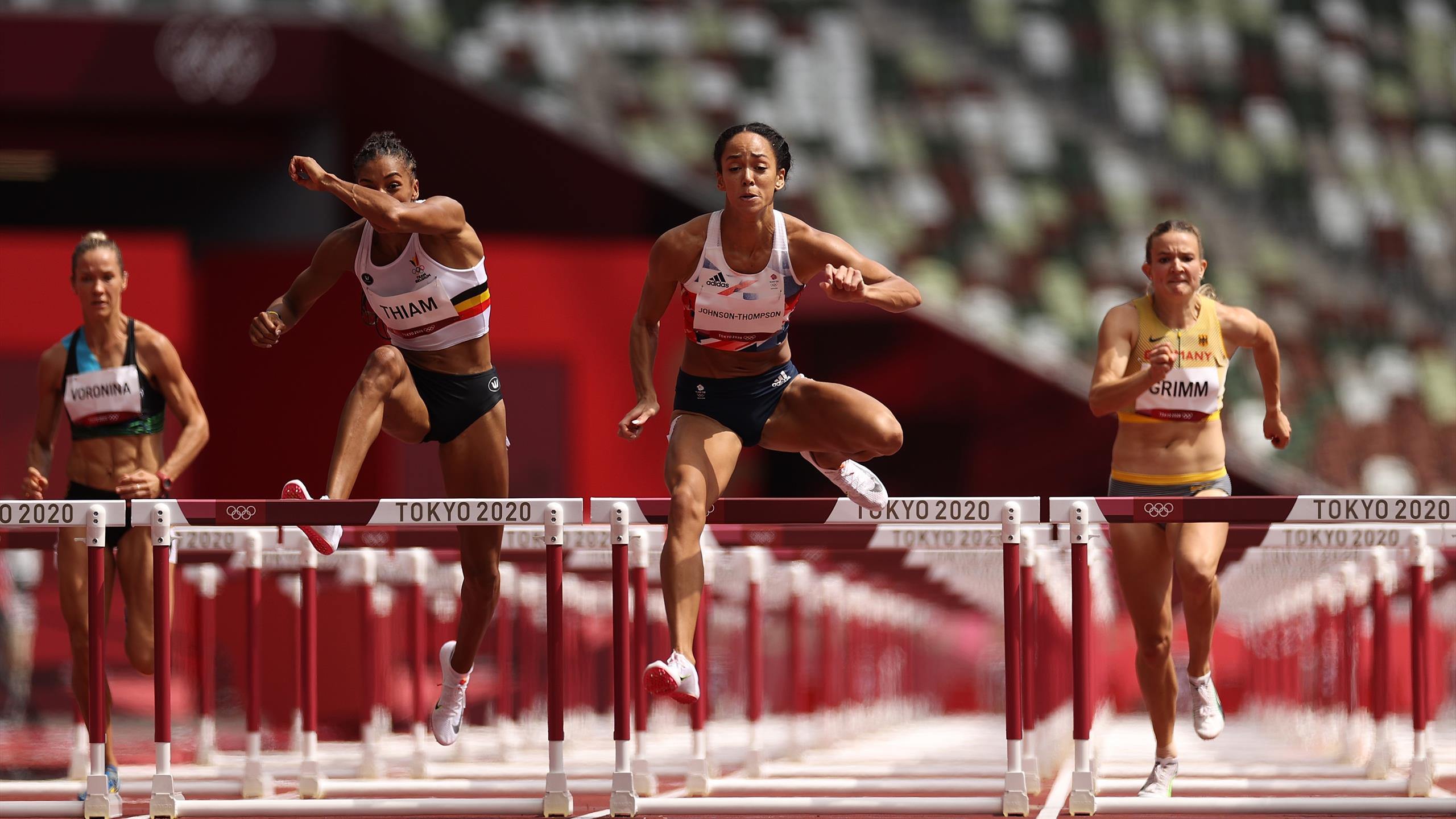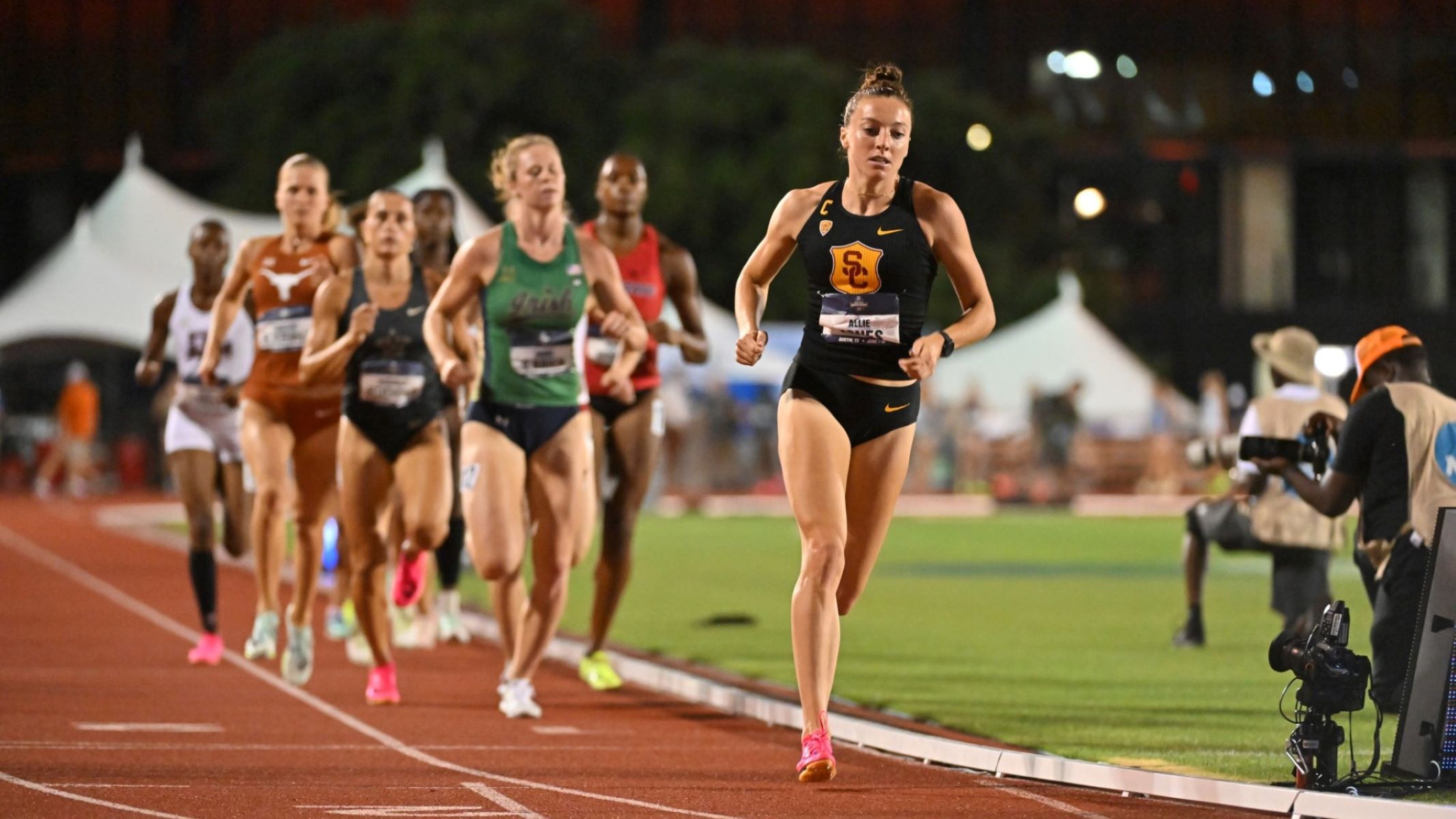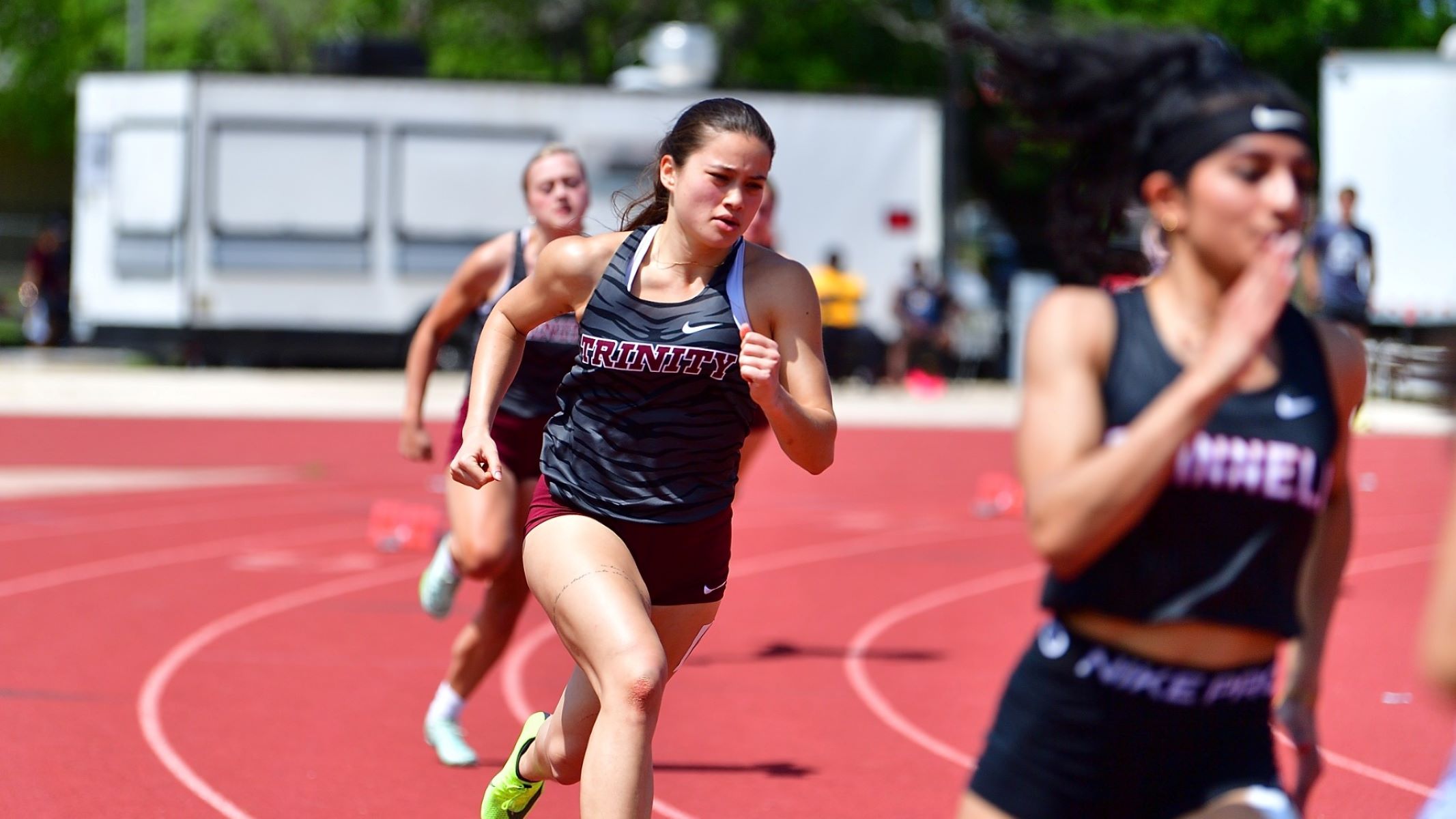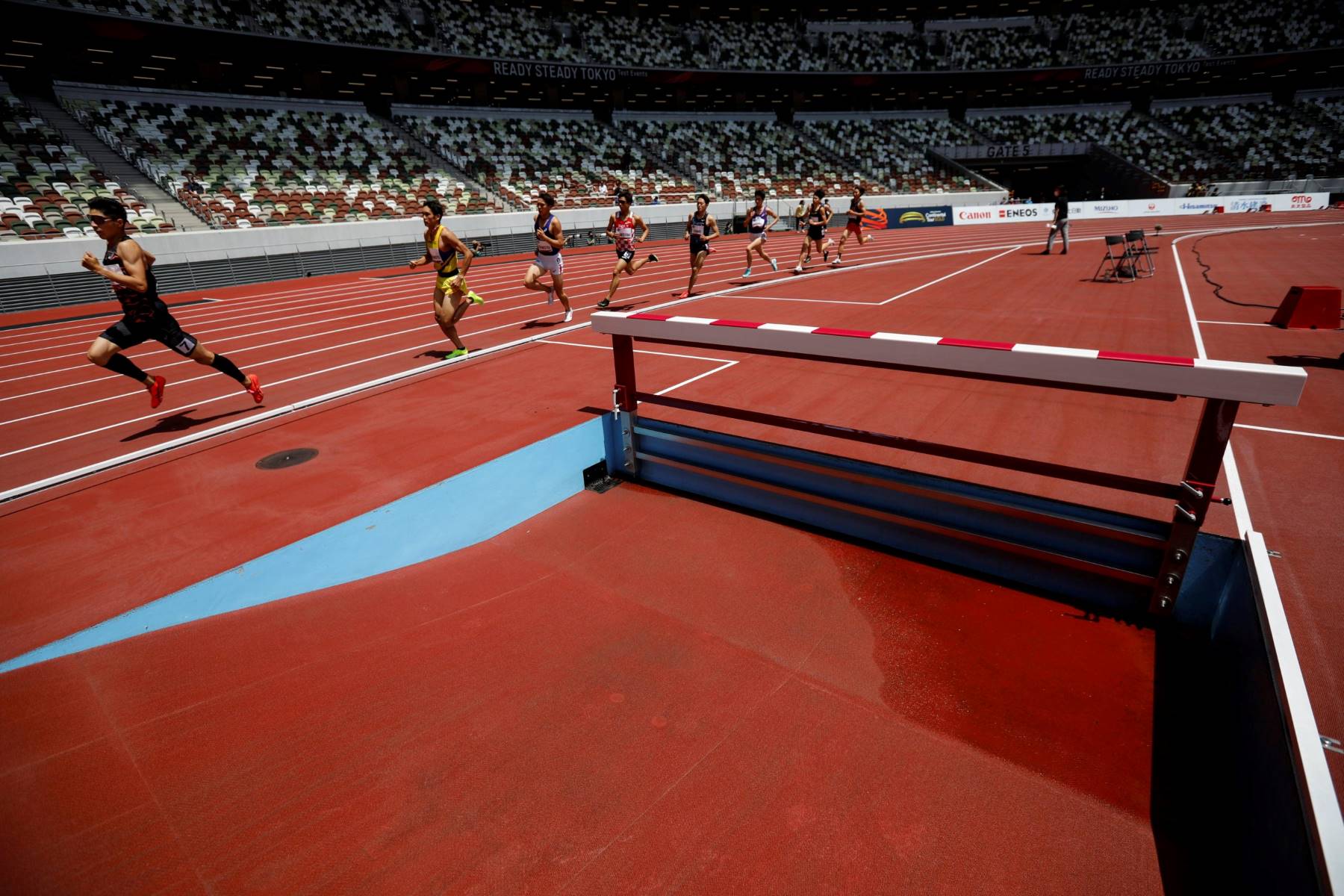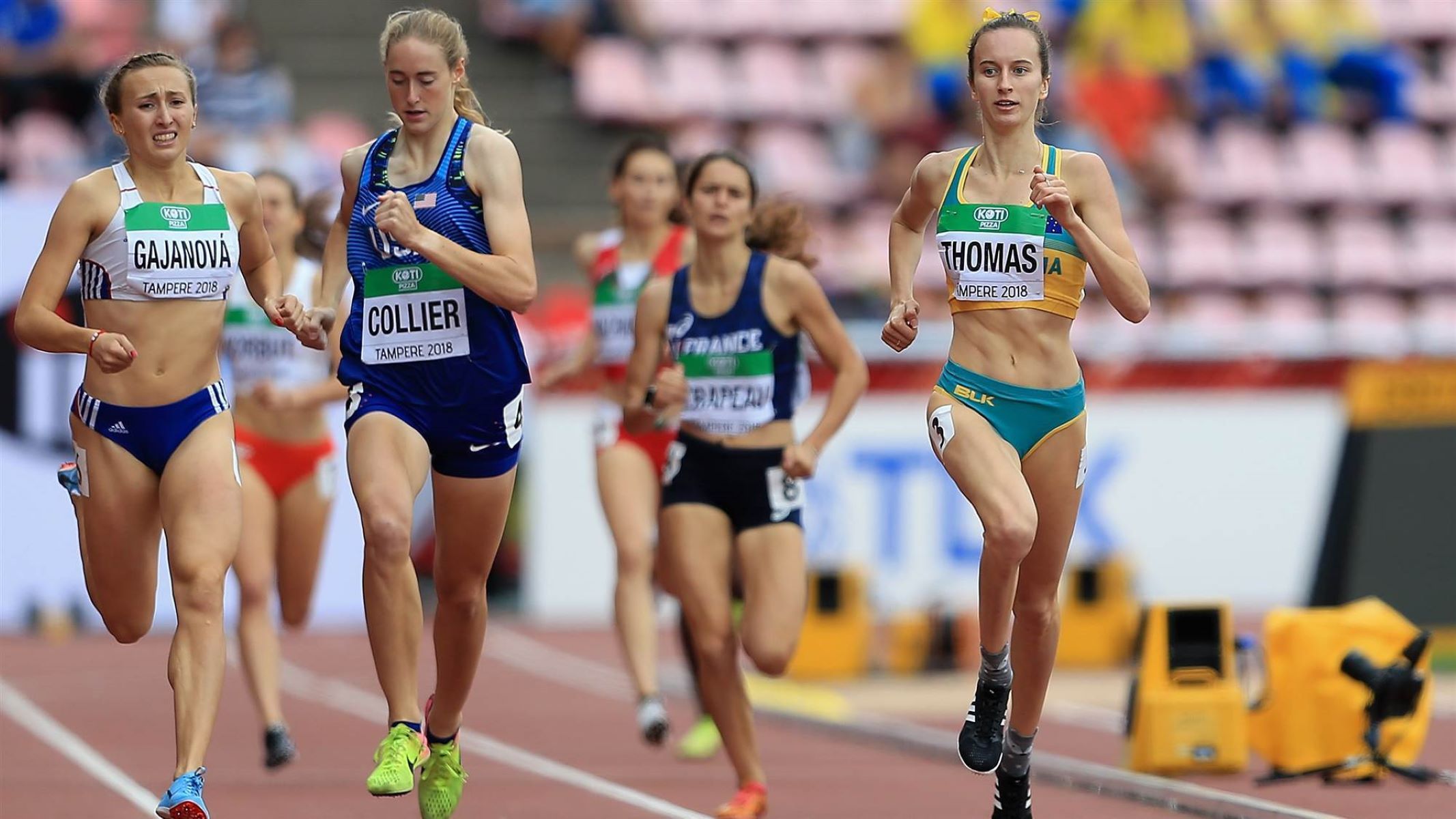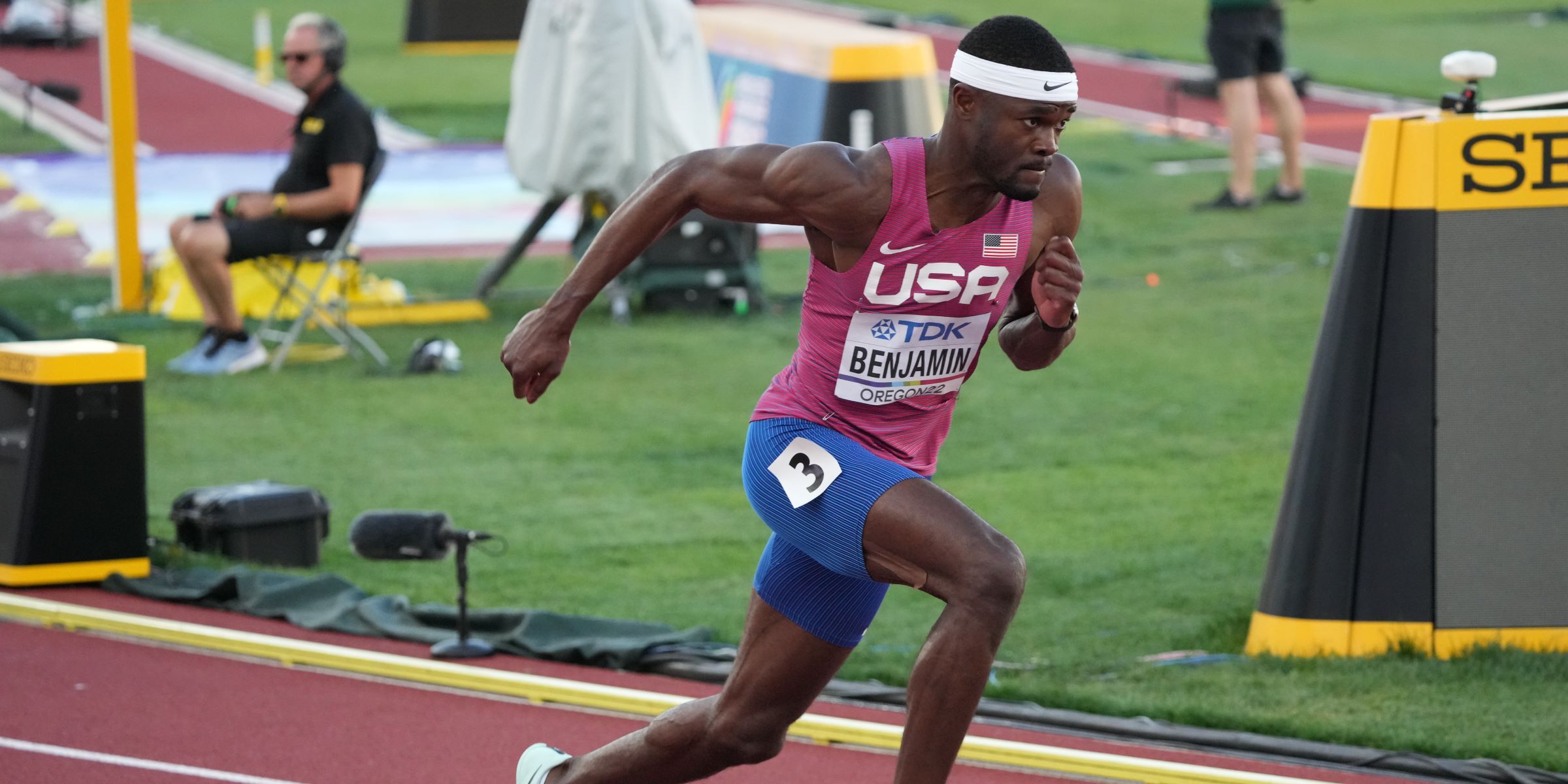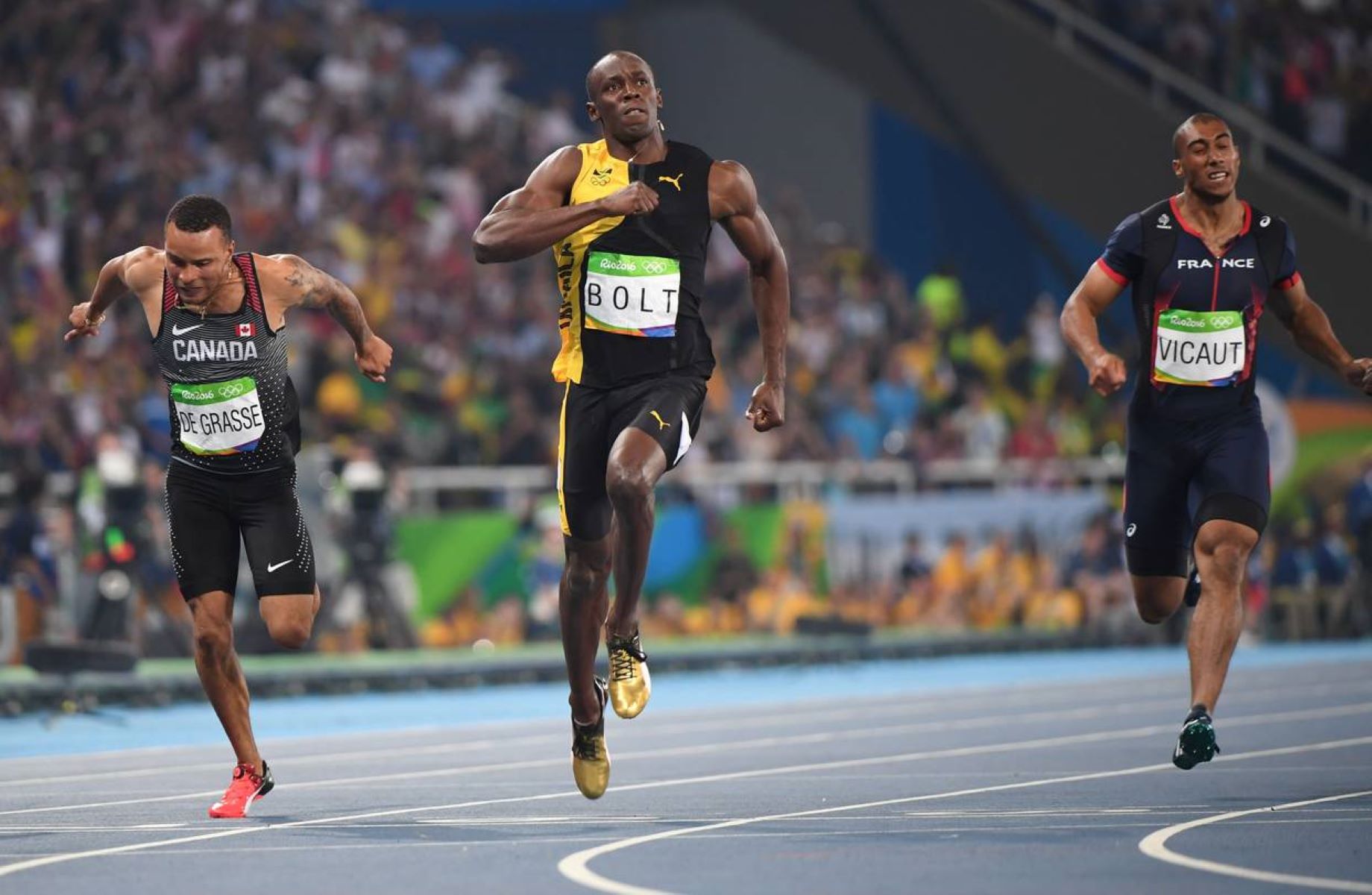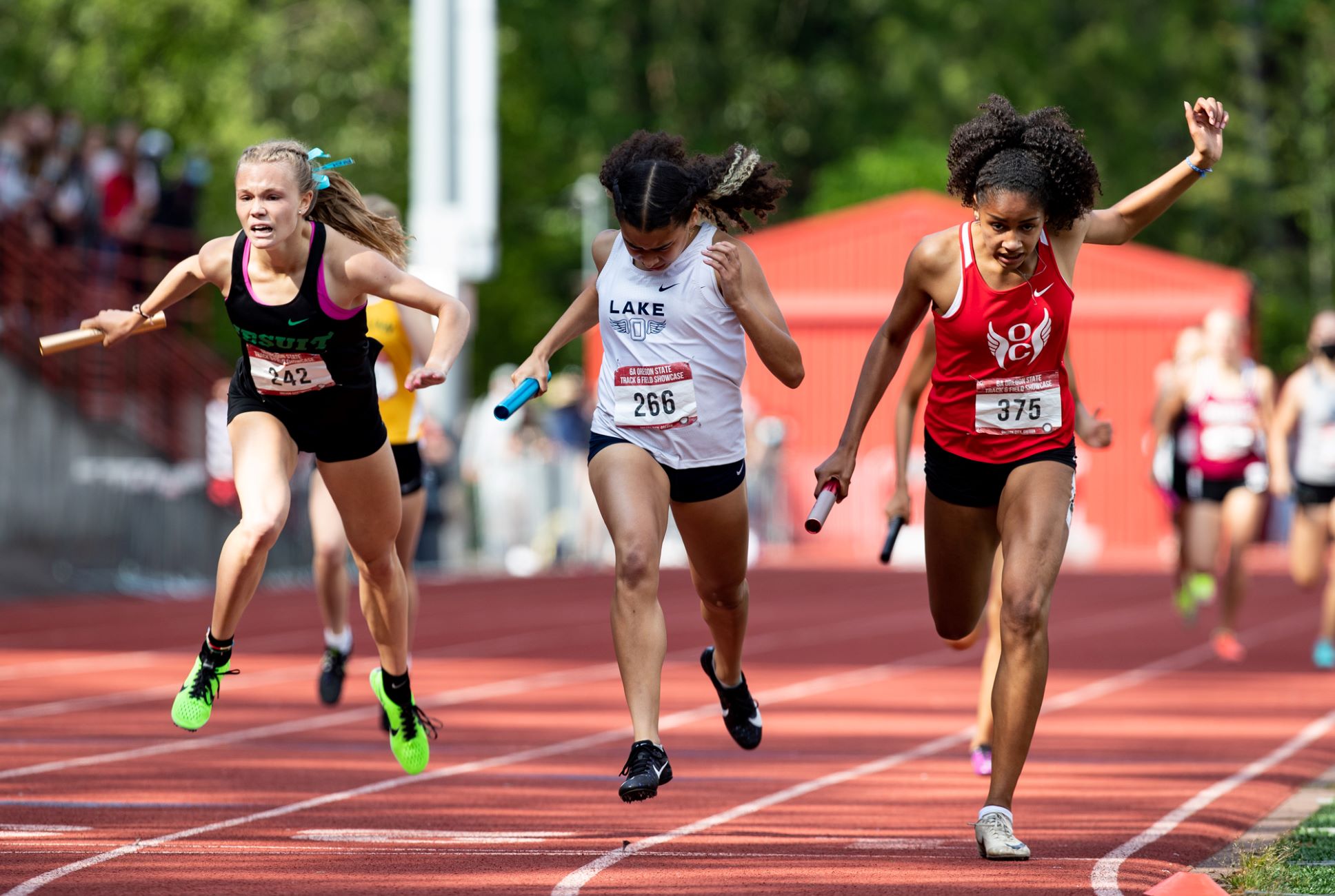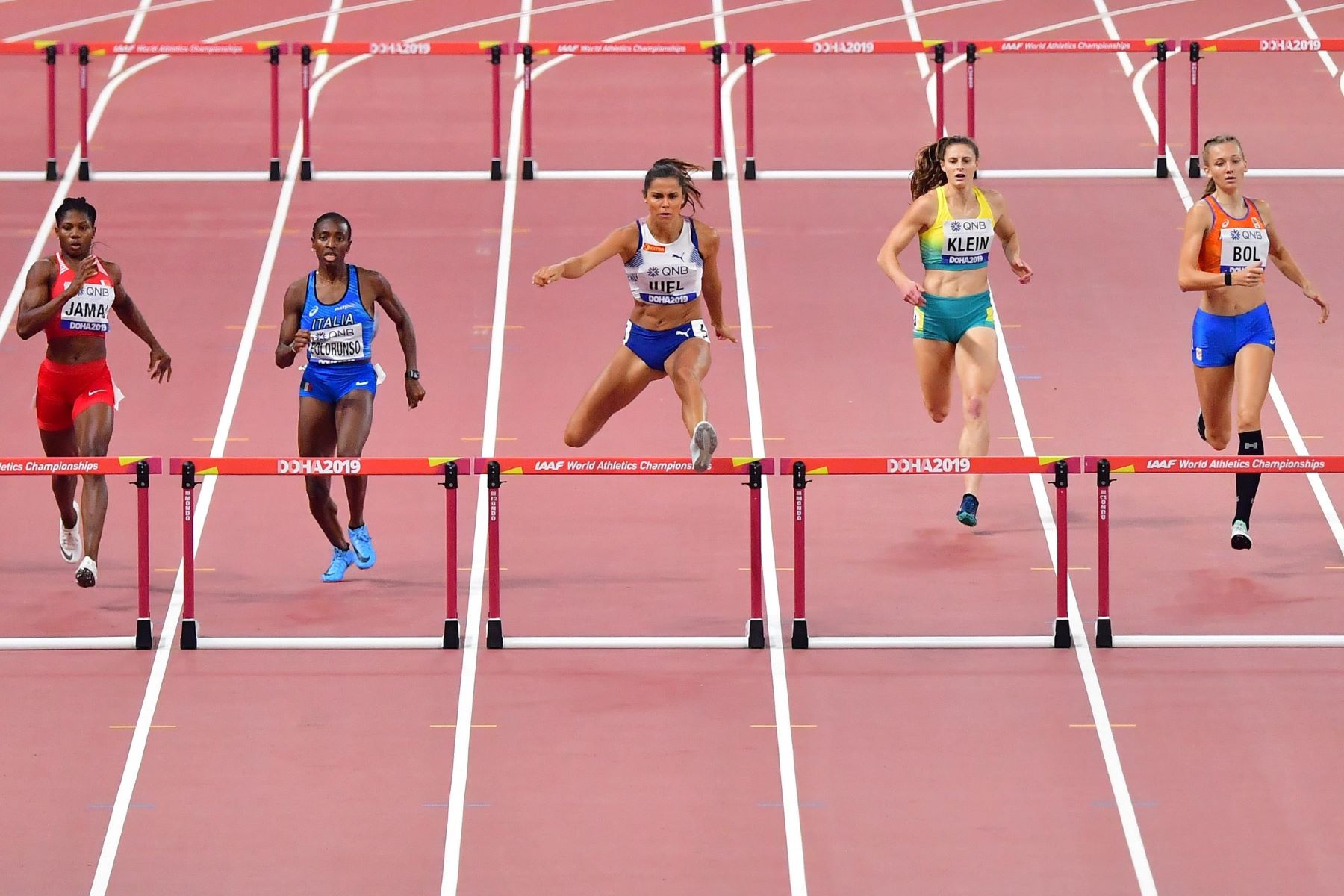

Featured
What Are Hurdles In Track And Field
Modified: January 2, 2024
Learn all about the featured hurdles in track and field, including their types, rules, and techniques for overcoming them. Enhance your performance and reach new heights in this demanding sport.
Introduction
Welcome to the exciting world of track and field! If you enjoy watching or participating in athletic sports, you’ve likely come across the exhilarating event known as hurdles. Hurdling is a dynamic and challenging discipline that requires a unique combination of speed, agility, and technique. In this article, we will dive into the world of hurdles in track and field, exploring their history, importance, types, techniques, training, mental challenges, injuries, and notable records. So, lace up your running shoes and let’s jump right in!
Track and field has a rich history dating back to ancient Greek and Roman civilizations. The first documented evidence of organized track and field events dates back to the ancient Olympic Games in Olympia around 776 BC. These early competitions featured a variety of running, throwing, and jumping events, with hurdles gradually making their way into the sport.
Today, hurdles play a crucial role in track and field, adding an extra element of excitement and skill. Hurdling requires athletes to sprint at top speed while simultaneously leaping over a series of barriers known as hurdles. These hurdles are set at specific heights, depending on the athlete’s age and gender.
There are three main types of hurdles used in track and field competitions: high hurdles, intermediate hurdles, and sprint hurdles. High hurdles are the tallest and are generally used in men’s and women’s hurdle races. Intermediate hurdles are slightly lower and are primarily used in the 400-meter hurdle event. Sprint hurdles are the lowest in height and are commonly used in shorter sprint races, such as the 100-meter hurdles.
To successfully clear the hurdles, athletes must employ a specific technique. This technique involves a combination of proper stride length, arm movements, and body positioning. The goal is to maintain maximum speed while efficiently clearing each hurdle to minimize time lost during the race.
History of Track and Field
The roots of track and field can be traced back to ancient civilizations, where athletic competitions were a prominent part of their culture. The Greeks and Romans organized sporting events to honor their gods and showcase human strength and endurance. These early competitions laid the foundation for what would eventually become track and field.
One of the earliest recorded instances of organized athletic competitions is the ancient Olympic Games held in Olympia, Greece, in 776 BC. These games featured various events, including footraces, discus throwing, long jump, and wrestling, among others. While hurdles were not initially included, they became a notable part of track and field in subsequent centuries.
During the Middle Ages, organized sports took a backseat, but the concept of hurdle racing continued to exist in various forms. Hurdles were used as obstacles in equestrian events, and occasionally, people would compete on foot by leaping over barriers.
The revival of track and field as a modern sport can be credited to the efforts of the British, who established the Amateur Athletic Association (AAA) in 1880. The AAA standardized the rules and regulations for track and field events, including hurdles.
The inclusion of hurdles in track and field events came about in the late 19th century. Initially, the hurdles were made of solid wood and were relatively high, making them a challenge to clear. Over time, the design of hurdles evolved, with adjustments made to the height and materials used.
In 1900, women’s hurdles were introduced as an official event in track and field. The first women’s hurdle race took place at the Olympic Games in Paris. Since then, women’s hurdles have gained popularity and recognition as a thrilling event in track and field competitions across the globe.
Track and field, including hurdles, made its Olympic debut in 1896 at the first modern Olympic Games in Athens. Since then, it has remained a staple event in each subsequent Olympic Games, captivating audiences with its display of speed, skill, and athleticism.
Today, track and field, including hurdles, continues to evolve and thrive as a popular sport worldwide. Athletes from all walks of life train rigorously to compete at various levels, from local school competitions to international events.
Importance of Hurdles in Track and Field
Hurdles play a significant role in track and field, adding excitement, skill, and strategy to the sport. They test an athlete’s speed, agility, coordination, and technique, making them an essential component of any competitive track and field event. Let’s explore the importance of hurdles in more detail.
1. Athleticism and Skill Development: Hurdles require athletes to showcase their athleticism by sprinting at top speed while clearing each hurdle flawlessly. It demands a unique combination of speed, power, agility, and coordination. By participating in hurdles, athletes develop these skills, enhancing their overall athletic performance.
2. Mental and Physical Stamina: Hurdles require athletes to possess mental and physical stamina. The ability to maintain focus and composure throughout the race, even when faced with the physical and mental challenges of clearing each hurdle, is crucial. Hurdling builds mental resilience, fortitude, and the ability to push beyond one’s limits.
3. Strategic Approach: Successful hurdling involves more than just sprinting and jumping. Athletes need to develop a strategic approach that involves proper pacing, hurdle clearance technique, and race strategies. This strategic mindset promotes critical thinking, adaptability, and decision-making skills.
4. Spectator Appeal: Hurdle events are visually captivating, attracting spectators to track and field competitions. The excitement of watching athletes navigate the barriers with speed and precision creates a thrilling spectacle for viewers. Hurdles add an element of drama and unpredictability to the race, making it an engaging event for both spectators and participants.
5. Transferable Skills: The skills learned in hurdling are transferable to other aspects of life. Athletes develop discipline, perseverance, goal-setting, and time-management skills, which can be applied in academics, career pursuits, and personal life.
6. Team and Individual Performance: Hurdling contributes to both team and individual success in track and field. In team events, points scored in hurdle races contribute to the overall team score, fostering a sense of camaraderie and teamwork. On an individual level, success in hurdle events can lead to personal achievements, accolades, and opportunities for advancement in the sport.
Overall, hurdles bring dynamic and thrilling elements to track and field, attracting athletes and spectators alike. They serve as a platform to showcase an athlete’s athleticism, mental fortitude, and strategic approach. Whether it’s for personal development or competitive pursuits, the importance of hurdles in the world of track and field cannot be overstated.
Types of Hurdles
In track and field, there are different types of hurdles used in various events. Each type has its own characteristics and is designed to challenge athletes in different ways. Let’s take a closer look at the three main types of hurdles: high hurdles, intermediate hurdles, and sprint hurdles.
1. High Hurdles: High hurdles are the tallest and most challenging type of hurdle. They are generally used in men’s and women’s hurdle races, such as the 110-meter hurdles for men and the 100-meter hurdles for women. The height of high hurdles for men is 42 inches (1.067 meters), while for women it is 33 inches (0.8382 meters). Athletes competing in high hurdles need to generate significant power and maintain excellent technique to clear the taller barriers.
2. Intermediate Hurdles: Intermediate hurdles are slightly lower than high hurdles and are primarily used in the 400-meter hurdle event. The height of intermediate hurdles for both men and women is 36 inches (0.9144 meters). The 400-meter hurdle race requires athletes to maintain a fast pace while skillfully navigating the hurdles. It demands a balance of speed, endurance, and technique.
3. Sprint Hurdles: Sprint hurdles, also known as low hurdles, are the shortest type of hurdle. They are commonly used in shorter sprint races, such as the 60-meter hurdles and the 100-meter hurdles for women. The height of sprint hurdles for women is 30 inches (0.762 meters). Sprint hurdles require athletes to display explosive speed and quick reflexes to clear the barriers efficiently while maintaining a high running cadence.
It’s important to note that the distance between each hurdle varies depending on the event. In high hurdles and sprint hurdles, the spacing between the hurdles is fixed. In intermediate hurdles, the spacing gradually decreases as the race progresses, challenging athletes to adjust their stride pattern.
The design of hurdles has evolved over time, with modern hurdles typically made of lightweight materials such as aluminum or plastic. The use of such materials ensures safety for the athletes while still presenting a challenge.
Understanding the different types of hurdles is crucial for athletes, coaches, and spectators. Each type requires specific skills, techniques, and strategies to excel. Whether it’s the high hurdles, intermediate hurdles, or sprint hurdles, these obstacles play a significant role in shaping the dynamics and excitement of track and field events, adding an extra element of challenge for athletes and entertainment for spectators.
Basic Technique for Hurdling
Hurdling requires a specific technique that allows athletes to clear each hurdle efficiently while maintaining maximum speed. Mastering the proper technique is vital for success in hurdling. Let’s explore the basic technique for hurdling in detail.
1. Sprinting Approach: A strong sprinting approach is crucial for a successful hurdle clearance. Athletes should start with a powerful drive phase, accelerating explosively out of the blocks or starting position. Maintaining a consistent and fast sprinting speed throughout the race sets the foundation for effective hurdling.
2. Lead Leg and Trail Leg: When approaching a hurdle, athletes need to determine which leg will be their lead leg, the leg that will go over the hurdle first. This decision is typically based on the athlete’s preference and dominant leg. The trail leg is the leg that follows the lead leg over the hurdle. It’s important to establish a smooth and efficient rhythm between the lead leg and trail leg to maintain momentum.
3. Knee Drive: As the lead leg approaches the hurdle, athletes should focus on driving their knee up towards their chest. This upward motion helps to generate power and lift the lead leg over the hurdle. It’s essential to maintain a controlled and explosive knee drive to clear the barrier without losing speed.
4. Arm Action: Proper arm action is crucial for balance and coordination during hurdling. Athletes should pump their arms vigorously in sync with their stride, driving them forward and backward with each step. The arms should be bent at a 90-degree angle, moving parallel to the body. This arm action helps to maintain momentum and stability while clearing the hurdles.
5. Hurdle Clearance: As the lead leg approaches the hurdle, athletes need to extend the lead leg and drive it over the hurdle, aiming to clear it at the highest point. At the same time, the trail leg should drive forward, sweeping over the hurdle in a smooth and controlled motion. Athletes should strive for a fluid and efficient movement, minimizing contact with the hurdle to maintain speed.
6. Landing and Recovery: After clearing the hurdle, athletes should focus on landing on their lead leg and quickly recovering for the next hurdle. Landing on the balls of the feet and immediately driving off the ground helps to maintain speed and momentum between each hurdle. Efficient landing and recovery allow for a seamless transition from one hurdle to the next.
Practice, repetition, and feedback from coaches are essential for mastering the basic technique for hurdling. Athletes should focus on developing strength, flexibility, and coordination to execute the technique effectively. Regular training, drills, and video analysis can help identify areas for improvement and refine the hurdling technique to achieve optimal performance.
Common Hurdling Mistakes to Avoid
Hurdling is a challenging and technical event that requires precision and mastery of specific techniques. Athletes often make common mistakes that can hinder their performance and lead to unnecessary obstacles. Being aware of these mistakes is crucial for improvement. Let’s discuss some common hurdling mistakes to avoid:
1. Poor Sprinting Technique: One common mistake is not focusing enough on sprinting technique. Hurdling begins with a strong sprinting approach, so it’s important to dedicate time to developing proper sprinting mechanics, including arm swing, knee lift, and foot strike. Neglecting these fundamentals can affect hurdle clearance and overall speed.
2. Incorrect Hurdle Approach: Many athletes fail to approach the hurdle at the correct angle, resulting in inefficient hurdle clearance. Approaching the hurdle too close or too far can disrupt the rhythm and timing, leading to collisions or missteps. It’s important to practice finding the optimal distance and angle for smooth hurdle clearance.
3. Insufficient Knee Drive: Lacking sufficient knee drive can result in low clearance and potential contact with the hurdle. Athletes should focus on driving their lead knee aggressively upward towards the chest to generate power and height, ensuring proper clearance. Neglecting this crucial aspect can lead to hitting or knocking down the hurdles.
4. Inadequate Trail Leg Action: Not giving enough attention to the trail leg action is another common mistake. The trail leg should follow the lead leg over the hurdle with a fluid and efficient motion. Neglecting to properly extend and drive the trail leg forward can cause clipping the hurdle or throwing off the athlete’s balance.
5. Overstriding: Overstriding, or taking too long of a stride between hurdles, can disrupt the athlete’s rhythm and timing. It slows down the sprinting speed and makes it harder to generate enough lift and power for efficient hurdle clearance. Athletes should focus on maintaining an optimal stride length that allows for quick and controlled movement between the hurdles.
6. Lack of Flexibility and Mobility: Insufficient flexibility and mobility can severely impact hurdle technique. Athletes should regularly incorporate stretching and mobility exercises into their training routine to improve hip flexibility, hamstring flexibility, and overall range of motion. Limited flexibility can hinder proper knee drive and trail leg action, affecting hurdle clearance and overall performance.
7. Inadequate Hurdle Specific Training: Not dedicating enough time to specific hurdle training can hamper progress. Hurdle drills, technique-focused workouts, and repetition of hurdle combinations are essential for honing the required skills and developing muscle memory. Athletes should allocate dedicated training sessions to focus on hurdle-specific techniques and address any weaknesses.
Avoiding these common hurdling mistakes requires awareness, practice, and feedback. Coaches and trainers play a crucial role in identifying and correcting these errors. By continuously fine-tuning technique, focusing on proper sprinting mechanics, and addressing weaknesses, athletes can improve their hurdling performance and achieve greater success on the track.
Training for Hurdles
Training for hurdles requires a combination of speed, agility, strength, and technique. Athletes need to develop specific skills to excel in this challenging discipline. Let’s explore some key aspects of training for hurdles.
1. Sprint Training: Since speed is crucial in hurdling, athletes should focus on improving their sprinting ability. This includes training for explosive starts, acceleration, and maintaining top speed over short distances. Sprint workouts should be incorporated into the training regimen to build power and speed necessary for hurdle races.
2. Hurdle Drills: Hurdle drills help athletes refine their technique and develop the necessary muscle memory. These drills include working on lead leg and trail leg mechanics, practicing drive phase, and focusing on rhythm and coordination. Hurdle drills should be performed regularly to reinforce proper technique and improve efficiency.
3. Strength and Conditioning: Developing strength is essential for hurdling. Athletes should focus on strengthening their lower body muscles, including the quads, hamstrings, glutes, and calves. Strength-training exercises such as squats, lunges, plyometrics, and core exercises help to build power and stability, aiding in efficient hurdle clearance.
4. Plyometric Training: Plyometrics are explosive exercises that enhance power and improve quickness. Hurdle-specific plyometric exercises, such as hurdle hops, box jumps, and bounding exercises, help to develop explosive movements and improve hurdle clearance. Plyometric training should be incorporated under the guidance of a qualified coach or trainer to ensure proper form and technique.
5. Flexibility and Mobility: Flexibility and mobility are essential for hurdling to achieve optimal knee drive, trail leg action, and overall range of motion. Regular stretching routines, dynamic warm-ups, and mobility exercises should be incorporated into the training plan. This helps to improve flexibility in the hips, hamstrings, and groin area, aiding in hurdle clearance and reducing the risk of injuries.
6. Endurance Training: Hurdle races require athletes to maintain speed and form throughout the race distance. Endurance training, such as interval training, long-distance runs, and tempo runs, should be included in the training program to improve cardiovascular fitness and endurance.
7. Technique and Video Analysis: Regular video analysis of hurdle technique can provide valuable feedback for athletes and coaches. Reviewing video footage helps identify areas for improvement, such as stride length, posture, arm action, and hurdle clearance. By analyzing technique, athletes can make necessary adjustments, refine their approach, and enhance overall performance.
Remember, consistency and progressive overload are key factors in training for hurdles. Gradually increase the intensity and volume of workouts over time, allowing the body to adapt and improve. It’s also important to incorporate rest days and recovery strategies to prevent overtraining and reduce the risk of injuries.
Working closely with coaches or trainers who have expertise in hurdles can greatly benefit athletes. They can provide personalized training plans, monitor progress, and offer valuable guidance and support throughout the training process. With consistent training, dedication, and a focus on proper technique, athletes can unlock their full potential and excel in the exciting world of hurdle racing.
Overcoming Mental Hurdles in Track and Field
Athletics, including track and field, is as much a mental game as it is physical. The mind plays a vital role in an athlete’s performance, and overcoming mental hurdles is crucial for success. Let’s explore some common mental challenges in track and field and strategies to overcome them.
1. Pre-Race Nerves: Many athletes experience pre-race nerves, which can cause anxiety and negatively impact performance. To overcome this, athletes can develop a pre-race routine that includes relaxation techniques such as deep breathing and visualization. Positive self-talk and focusing on past successes can also help boost confidence and reduce anxiety.
2. Fear of Failure: The fear of failure can be a significant mental hurdle for track and field athletes. It’s essential to shift focus from the outcome to the process. Setting realistic goals, focusing on personal improvement, and embracing a growth mindset can help athletes overcome the fear of failure and perform to their fullest potential.
3. Handling Pressure: Track and field competitions can be high-pressure events. Learning to manage pressure and perform under stress is crucial. Techniques such as mindfulness, meditation, and positive visualization can help athletes stay present and focused. Developing a routine for coping with pressure and seeking support from coaches and teammates can also be beneficial.
4. Dealing with Setbacks: Setbacks and disappointments are inevitable in any sport, including track and field. It’s important for athletes to view setbacks as learning opportunities and maintain a resilient mindset. Reflecting on what went wrong, formulating an action plan, and maintaining self-belief are essential for bouncing back and continuing to strive for success.
5. Maintaining Motivation: Sustaining motivation throughout the ups and downs of a track and field season can be challenging. Athletes can keep motivation high by setting meaningful goals, creating a supportive training environment, and finding ways to stay inspired, such as watching inspiring performances or surrounding themselves with like-minded individuals.
6. Concentration and Focus: Maintaining concentration and focus during races is crucial for optimal performance. Athletes can develop strategies to enhance focus, such as using cue words or phrases, breaking the race down into manageable sections, and practicing mindfulness techniques. Eliminating distractions and developing mental toughness through training and simulation can also improve concentration.
7. Positive Self-Talk: Self-talk plays a significant role in an athlete’s mental state. Using positive self-talk can help boost confidence, maintain focus, and shift mindset from doubt to belief. Athletes should replace negative thoughts with positive affirmations and reminders of their abilities and past successes.
Overcoming mental hurdles in track and field requires consistent practice and a growth mindset. Developing mental resilience, utilizing relaxation techniques, seeking support from coaches and teammates, and maintaining a positive mindset are crucial for achieving mental strength and peak performance. By cultivating strong mental skills, athletes can unlock their true potential and excel in the sport of track and field.
Common Injuries and Injury Prevention in Hurdles
Hurdling in track and field puts significant stress on the body, increasing the risk of certain injuries. Understanding the common injuries that can occur and taking preventive measures is crucial for athletes to stay healthy and perform at their best. Let’s explore some common injuries and injury prevention strategies in hurdling.
1. Strains and Sprains: Strains and sprains, particularly in the ankles, knees, and hamstrings, are common in hurdling. These injuries can occur due to the high impact of landing and the rapid changes in direction. Proper warm-up routines, including dynamic stretching, can help prepare the muscles and joints for the demands of hurdling. Strengthening exercises, such as calf raises, squats, and lunges, can also help stabilize the lower body and reduce the risk of strains and sprains.
2. Shin Splints: Shin splints, also known as medial tibial stress syndrome, can occur due to the repetitive stress on the shins in hurdling. To prevent shin splints, athletes should gradually increase training intensity and volume, allowing the body to adapt. Wearing appropriate footwear with proper shock absorption and cushioning can also help reduce the impact on the shins.
3. Patellar Tendonitis: Patellar tendonitis, or jumper’s knee, can develop from the repetitive jumping and landing motions in hurdling. To prevent this injury, athletes should focus on strengthening the quadriceps and surrounding muscles through exercises like squats, leg presses, and step-ups. Incorporating proper rest and recovery periods into training is also important to allow the patellar tendon time to heal and prevent overuse.
4. Overuse Injuries: Overuse injuries, such as stress fractures and tendonitis, can occur in the feet, knees, and hips from the repetitive nature of hurdling. Gradual training progression, regular rest days, and cross-training activities that promote overall muscle balance and recovery are essential for preventing overuse injuries. Athletes should listen to their bodies and address any signs of pain or discomfort promptly.
5. Proper Technique and Form: Correct hurdling technique is vital for injury prevention. Athletes should focus on maintaining proper posture, including a slight forward lean, to minimize stress on the back and joints. Executing hurdle clearance with appropriate knee drive and trail leg action helps distribute forces evenly, reducing the risk of injury. Coaches should provide guidance and monitor athletes’ technique to ensure optimal performance and injury prevention.
6. Core Strength and Stability: Building a strong core is essential for injury prevention in hurdling. The core muscles provide stability and support during the demanding movements of sprinting and hurdling. Incorporating exercises such as planks, Russian twists, and medicine ball rotations into training can improve core strength, stability, and reduce the risk of injuries.
7. Recovery and Rest: Adequate rest and recovery are critical for injury prevention. Athletes should prioritize sleep, proper nutrition, and hydration to support the body’s healing processes. Active recovery activities such as swimming, cycling, and foam rolling can help promote circulation, relieve muscle soreness, and aid in injury prevention.
Preventing injuries in hurdling requires a holistic approach that includes proper technique, strengthening exercises, gradual training progression, and prioritizing recovery. Coaches and athletes should work together to identify potential weaknesses and implement injury prevention strategies. By taking proactive measures, athletes can minimize the risk of injuries and stay in optimal condition to excel in the demanding sport of hurdling.
Famous Hurdling Records and Performances
Over the years, numerous track and field athletes have left their mark on the world of hurdling, setting records and delivering memorable performances. Let’s explore some of the most famous hurdling records and notable moments in the history of the sport.
1. Men’s 110-Meter Hurdles: One of the most legendary records in hurdling is the men’s 110-meter hurdles world record set by Aries Merritt of the United States in 2012. Merritt clocked an astonishing time of 12.80 seconds, breaking the previous record set by Dayron Robles of Cuba in 2008. This record-breaking performance showcased Merritt’s exceptional speed, technique, and agility in hurdling.
2. Women’s 100-Meter Hurdles: In the women’s 100-meter hurdles, the world record is held by Kendra Harrison of the United States. Harrison clocked a phenomenal time of 12.20 seconds in 2016, surpassing the previous record set by Yordanka Donkova of Bulgaria in 1988. Harrison’s record-breaking performance solidified her status as one of the greatest female hurdlers of all time.
3. Colin Jackson: Colin Jackson from Great Britain is often regarded as one of the greatest hurdlers in history. He set the world record in the men’s 110-meter hurdles in 1993 with a time of 12.91 seconds. Jackson’s impeccable technique and consistency throughout his career earned him multiple championship titles and cemented his place in hurdling history.
4. Sally Pearson: Sally Pearson of Australia is widely recognized as one of the greatest female hurdlers. She won the gold medal in the 100-meter hurdles at the 2012 Olympics in London. Pearson’s performance was exceptional, as she triumphed over a highly competitive field with energy, precision, and sheer determination.
5. Renaldo Nehemiah: Renaldo Nehemiah, a former American hurdler, made history in the 1970s and 1980s. Nehemiah was the first person to break the 13-second barrier in the 110-meter hurdles, setting a world record with a time of 12.93 seconds in 1979. His speed and technique revolutionized the event and inspired generations of hurdlers.
6. Gail Devers: Gail Devers, an American sprinter and hurdler, left a lasting impact on the sport with her remarkable performances. She won the gold medal in the 100-meter hurdles at the 1992 Olympics in Barcelona, showcasing her strength and agility. Devers’ ability to seamlessly transition between sprinting and hurdling made her a true force to be reckoned with.
7. Liu Xiang: Liu Xiang from China etched his name in hurdling history by winning the gold medal in the 110-meter hurdles at the 2004 Olympic Games in Athens. Liu’s victory made him the first male Chinese athlete to win an Olympic gold medal in track and field. His success inspired a new generation of Chinese hurdlers and brought global attention to the sport in his home country.
These remarkable records and performances highlight the incredible feats achieved by hurdlers. They motivate current and aspiring athletes to push their boundaries, aim for greatness, and continue the legacy of outstanding performances in the world of hurdling.
Conclusion
Hurdling is a captivating and challenging discipline that brings a unique blend of speed, agility, power, and technique to track and field. Through the history of track and field, hurdles have evolved into a prominent and exciting event, attracting athletes and spectators worldwide.
We have explored the rich history of track and field, tracing its origins back to ancient civilizations and witnessing its transformation into the modern-day sport we know today. Hurdles have played a vital role throughout this journey, adding thrill and skill to track and field competitions.
Understanding the different types of hurdles, such as high hurdles, intermediate hurdles, and sprint hurdles, is crucial for athletes, coaches, and spectators alike. Each type presents unique challenges, requiring specific techniques and skills for successful hurdle clearance.
We have also delved into the fundamental techniques for hurdling, emphasizing the importance of sprinting approach, lead leg and trail leg mechanics, arm action, and efficient hurdle clearance. By mastering these techniques, athletes can optimize their performance and enhance their chances of success.
Moreover, we’ve explored the common hurdles faced by athletes – not just the physical hurdles on the track, but also the mental obstacles they must overcome. By addressing pre-race nerves, fear of failure, pressure, setbacks, and maintaining motivation, athletes can develop mental resilience and perform at their best.
In any physically demanding sport like hurdling, injuries are a concern. We’ve discussed common hurdling injuries and the importance of injury prevention through proper technique, strength and conditioning, flexibility, rest, and recovery. By taking proactive measures, athletes can minimize the risk of injuries and maintain their physical well-being.
Lastly, we’ve celebrated the records and performances of legendary hurdlers who have left an indelible mark on the sport. Their achievements inspire current and future generations of athletes to strive for greatness and push the boundaries of human potential in hurdling.
In conclusion, hurdles in track and field represent not just physical challenges, but also embody the pursuit of excellence, mental strength, resilience, and the relentless pursuit of personal and athletic growth. It is a discipline that continues to captivate athletes and spectators alike, creating moments of excitement, inspiration, and achievement on the track.
